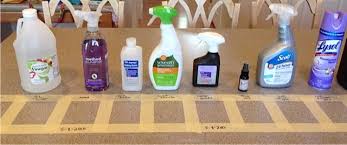
Breaking News
 Tuesday War Room LIVE: Trump Set to Shatter Deportation Record by End of First Year…
Tuesday War Room LIVE: Trump Set to Shatter Deportation Record by End of First Year…
 Parallel Polis Reborn: Freeing the Market through Decentralized Technologies
Parallel Polis Reborn: Freeing the Market through Decentralized Technologies
 Amazon goes nuclear with new modular reactor plant
Amazon goes nuclear with new modular reactor plant
 The alarming reality EXPOSED by the global internet meltdown... and why Amazon's crash...
The alarming reality EXPOSED by the global internet meltdown... and why Amazon's crash...
Top Tech News
 3D Printed Aluminum Alloy Sets Strength Record on Path to Lighter Aircraft Systems
3D Printed Aluminum Alloy Sets Strength Record on Path to Lighter Aircraft Systems
 Big Brother just got an upgrade.
Big Brother just got an upgrade.
SEMI-NEWS/SEMI-SATIRE: October 12, 2025 Edition
 Stem Cell Breakthrough for People with Parkinson's
Stem Cell Breakthrough for People with Parkinson's
 Linux Will Work For You. Time to Dump Windows 10. And Don't Bother with Windows 11
Linux Will Work For You. Time to Dump Windows 10. And Don't Bother with Windows 11
 XAI Using $18 Billion to Get 300,000 More Nvidia B200 Chips
XAI Using $18 Billion to Get 300,000 More Nvidia B200 Chips
 Immortal Monkeys? Not Quite, But Scientists Just Reversed Aging With 'Super' Stem Cells
Immortal Monkeys? Not Quite, But Scientists Just Reversed Aging With 'Super' Stem Cells
 ICE To Buy Tool That Tracks Locations Of Hundreds Of Millions Of Phones Every Day
ICE To Buy Tool That Tracks Locations Of Hundreds Of Millions Of Phones Every Day
 Yixiang 16kWh Battery For $1,920!? New Design!
Yixiang 16kWh Battery For $1,920!? New Design!
 Find a COMPATIBLE Linux Computer for $200+: Roadmap to Linux. Part 1
Find a COMPATIBLE Linux Computer for $200+: Roadmap to Linux. Part 1
Bleach, Hand Sanitizer, or Natural Cleaning Products? What to Use When

There's always a ferocious debate among people who swear by bleach, hand sanitizer, or natural cleaning products. But the fact is, there's no black and white answer. There are times and places for each of these.
Staying clean is a critical part of staying healthy. We have a wide array of disinfectants and cleaning products to stock up on. This guide takes the most common disinfectants, breaks down their pros and cons, and sorts out how and when to use each item.
Staying clean becomes even more important when access to medical care is not guaranteed, such as during or post-disaster. Therefore, we need to know to know how to remove pathogens from surfaces and fabrics.
Cleanliness Is Not Optional
Good hygiene and good household cleaning habits are essential to good health. While exposure to certain bacteria is good for us, even necessary for good health, there are also harmful microorganisms that can make use very sick. Some of them can live a surprisingly long time outside of the body.
For example:
MRSA is frequently spread via unwashed hands and bed linens.
Salmonella can live on surfaces for up to four weeks.
E. coli was shown to survive for a month on most metal surfaces.
While we always knew that Influenza was spread by coughing and sneezing, it has now been shown to be spread simply by breathing. Influenza can live for several hours airborne and 48 hours on hard surfaces.
Hepatitis can live anywhere from 4 days to several months outside the body, depending on the type.
One of the scariest viruses, Human Immunodeficiency Virus (HIV) doesn't live or reproduce outside the human body. However, given the right conditions, HIV can survive outside of the body in blood droplets up to several weeks, though no cases have ever been linked to exposure to blood spills.



